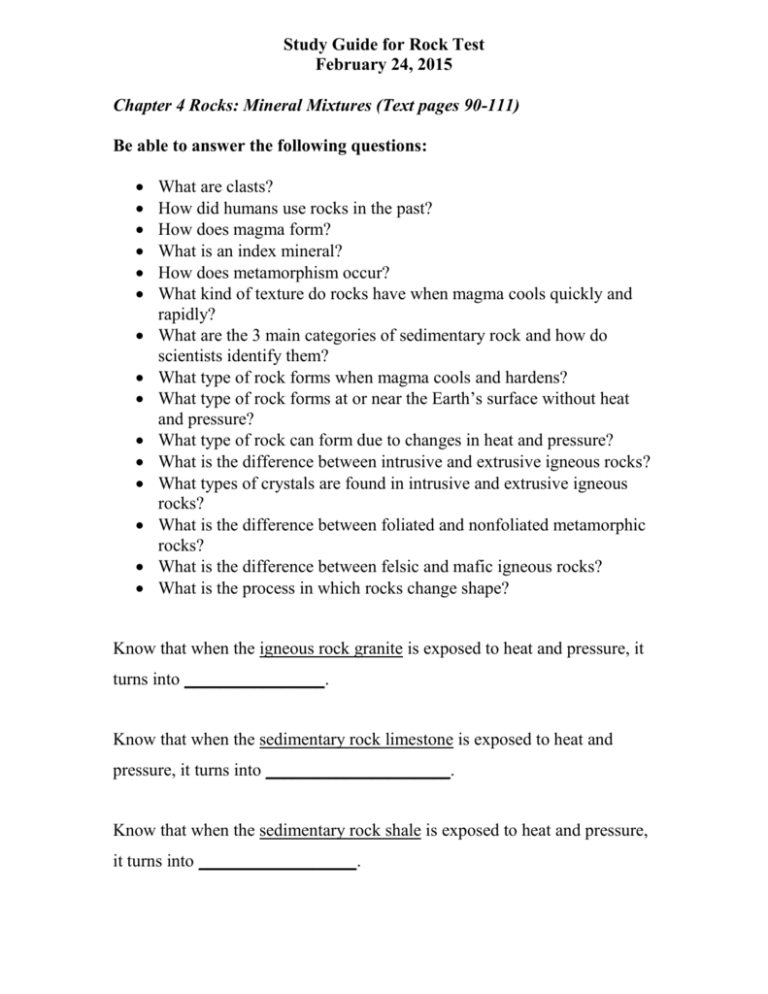Rock Test Study Guide: Mineral Mixtures & Rock Cycle
advertisement

Study Guide for Rock Test February 24, 2015 Chapter 4 Rocks: Mineral Mixtures (Text pages 90-111) Be able to answer the following questions: What are clasts? How did humans use rocks in the past? How does magma form? What is an index mineral? How does metamorphism occur? What kind of texture do rocks have when magma cools quickly and rapidly? What are the 3 main categories of sedimentary rock and how do scientists identify them? What type of rock forms when magma cools and hardens? What type of rock forms at or near the Earth’s surface without heat and pressure? What type of rock can form due to changes in heat and pressure? What is the difference between intrusive and extrusive igneous rocks? What types of crystals are found in intrusive and extrusive igneous rocks? What is the difference between foliated and nonfoliated metamorphic rocks? What is the difference between felsic and mafic igneous rocks? What is the process in which rocks change shape? Know that when the igneous rock granite is exposed to heat and pressure, it turns into ________________. Know that when the sedimentary rock limestone is exposed to heat and pressure, it turns into _____________________. Know that when the sedimentary rock shale is exposed to heat and pressure, it turns into __________________. Know that when sedimentary rock sandstone is exposed to heat and pressure, it becomes ____________________. ****Be familiar with the Rock Cycle diagram. Complete the chart by identifying the type of rock each set of rocks represent. Name of Rocks Type of Rock conglomerate, sandstone, shale coal, coquina, chalk calcite, halite granite, gabbro obsidian, pumice, basalt gneiss, slate marble, quartzite Short Responses 1) Describe how contact metamorphism is different from regional metamorphism. 2) Describe how index minerals help scientists identify where metamorphic rocks form within Earth’s layers.







